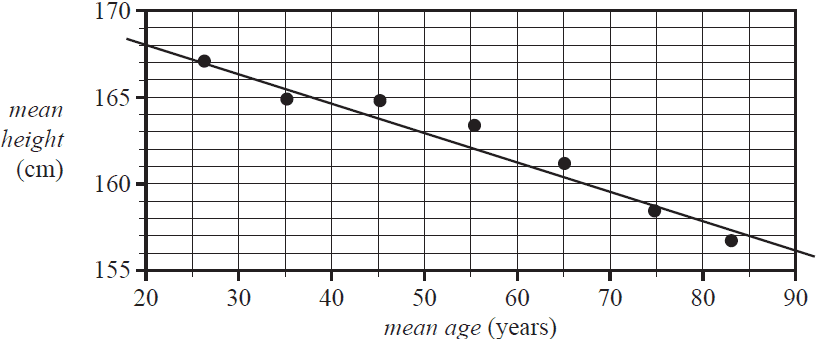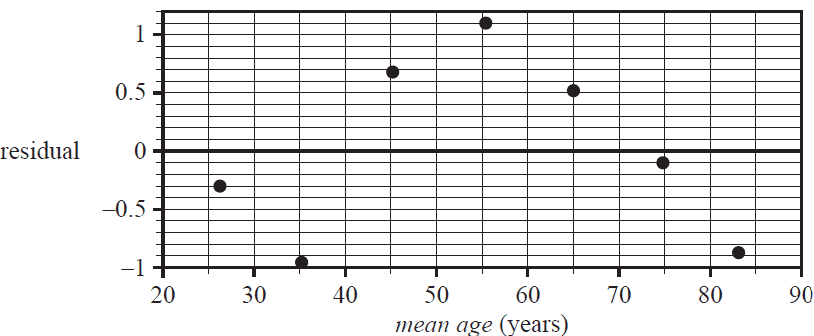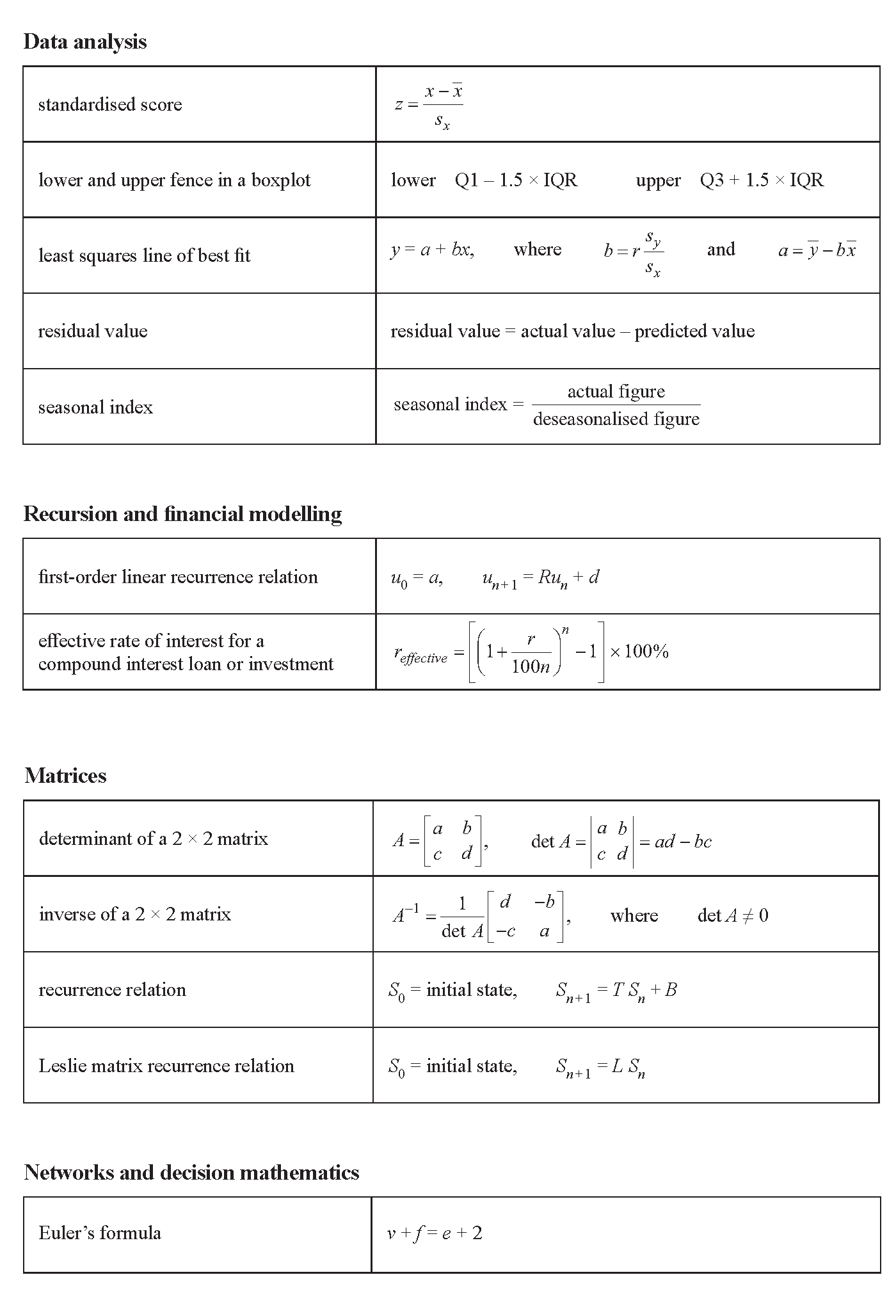VCE General Maths Data Analysis 2020 Mini Test 3
VCAA General Maths Exam 2
This is the full VCE General Maths Exam with worked solutions. You can also try Mini-Tests, which are official VCAA exams split into short tests you can do anytime.
Number of marks: 9
Reading time: 2 minutes
Writing time: 13 minutes
Instructions
• Answer all questions in the spaces provided.
• Write your responses in English.
• In all questions where a numerical answer is required, you should only round your answer when instructed to do so.
• Unless otherwise indicated, the diagrams in this book are not drawn to scale.
Data analysis - 2020 - Exam 2 (Part 3)
The table below shows the mean age, in years, and the mean height, in centimetres, of 648 women from seven different age groups.
| Age group | |||||||
|---|---|---|---|---|---|---|---|
| Twenties | Thirties | Forties | Fifties | Sixties | Seventies | Eighties | |
| Mean age (years) | 26.3 | 35.2 | 45.2 | 55.3 | 65.1 | 74.8 | 83.1 |
| Mean height (cm) | 167.1 | 164.9 | 164.8 | 163.4 | 161.2 | 158.4 | 156.7 |
a. What was the difference, in centimetres, between the mean height of the women in their twenties and the mean height of the women in their eighties? 1 mark
A scatterplot displaying this data shows an association between the mean height and the mean age of these women. In an initial analysis of the data, a line is fitted to the data by eye, as shown.

b. Describe this association in terms of strength and direction. 1 mark
c. The line on the scatterplot passes through the points (20, 168) and (85, 157).
Using these two points, determine the equation of this line. Write the values of the intercept and the slope in the appropriate boxes below.
Round your answers to three significant figures. 1 mark
\( \textit{mean height} = \) \( + \) \( \times \textit{mean age} \)
d. In a further analysis of the data, a least squares line was fitted. The associated residual plot that was generated is shown below.

The residual plot indicates that the association between the mean height and the mean age of women is non-linear.
The data presented in the table on page 12 is repeated below. It can be linearised by applying an appropriate transformation to the variable mean age.
| Mean age (years) | 26.3 | 35.2 | 45.2 | 55.3 | 65.1 | 74.8 | 83.1 |
| Mean height (cm) | 167.1 | 164.9 | 164.8 | 163.4 | 161.2 | 158.4 | 156.7 |
Apply an appropriate transformation to the variable mean age to linearise the data. Fit a least squares line to the transformed data and write its equation below.
Round the values of the intercept and the slope to four significant figures. 2 marks
Recursion and financial modelling
Question 2 (4 marks)Samuel owns a printing machine.
The printing machine is depreciated in value by Samuel using flat rate depreciation.
The value of the machine, in dollars, after \(n\) years, \(V_n\), can be modelled by the recurrence relation
\( V_0 = 120\,000, \quad V_{n+1} = V_n - 15\,000 \)
a. By what amount, in dollars, does the value of the machine decrease each year? 1 mark
b. Showing recursive calculations, determine the value of the machine, in dollars, after two years. 1 mark
c. What annual flat rate percentage of depreciation is used by Samuel? 1 mark
d. The value of the machine, in dollars, after \(n\) years, \(V_n\), could also be determined using a rule of the form \(V_n = a + bn\).
Write down this rule for \(V_n\). 1 mark
End of Multiple-Choice Question Book
VCE is a registered trademark of the VCAA. The VCAA does not endorse or make any warranties regarding this study resource. Past VCE exams and related content can be accessed directly at www.vcaa.vic.edu.au
